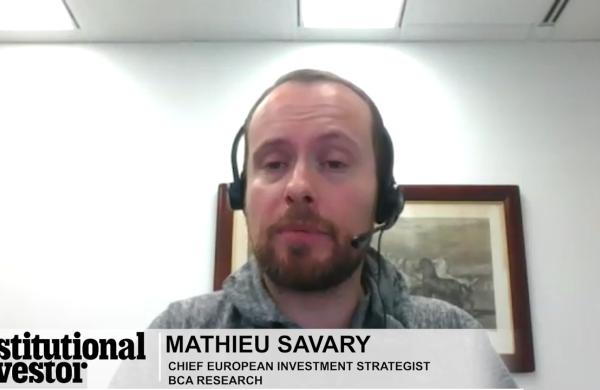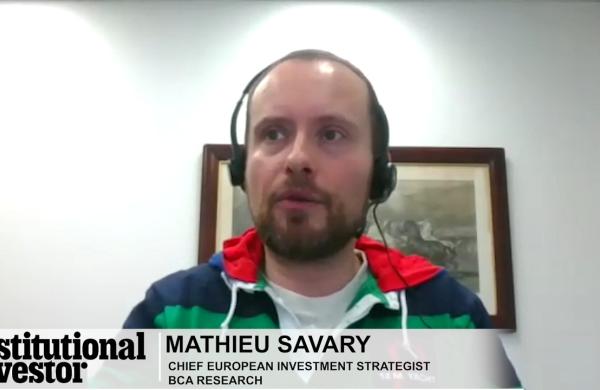Do fewer stock holdings give an equity portfolio manager a better shot at outperformance? Concentrated fund managers, who typically keep a few dozen positions at most, offer an emphatic yes.
"Limiting the number of stocks is a much better way to manage a portfolio than taking the so-called diversified approach," says Jim Huguet, president and cochief investment officer of Clearwater, Floridabased Great Cos., an investment adviser that uses a concentrated approach for its $832 million in assets. "There are benefits of getting to know the companies, and there are benefits in having lower turnover in terms of taxes and trading costs. And those benefits accrue."
Although definitions of concentrated funds vary, Morningstar tracks 104 domestic nonsector funds with no more than 30 stocks in their respective portfolios. Their combined assets: $42 billion. That's in a universe of some 8,000 equity funds with more than $7 trillion in assets. Fewer holdings don't necessarily mean that the fund is small: Janus Twenty Fund, which despite its name has 31 stocks in its portfolio, manages $9.8 billion, and Longleaf Partners Fund, with 21 holdings, runs $7.7 billion. The category, however, also includes the $62 million Matthew 25 Fund, which has 16 stocks in its portfolio.
According to an October 2003 survey of 1,771 equity funds conducted by the University of Michigan Business School, the 10 percent that were most concentrated beat their benchmarks by 2.48 percentage points before expenses over a 15-year period, from 1984 to 1999.
Concentrated fund managers question whether anyone can effectively select and track hundreds of stocks. "With so many stocks in a fund, where is the active management? There is none," says James Oelschlager, president and chief investment officer of Oak Associates Funds, an Akron, Ohio, money manager with $3 billion in assets. "You are really a closet indexer, whether you want to be or not."
Oelschlager's funds' recent performance makes a forceful case for his approach. All five of Oak Associates' concentrated funds beat the Standard & Poor's 500 index's 28.7 percent gain in 2003, and four of the portfolios were up more than 50 percent. "Diversified fund managers with hundreds of stocks must play defensive ball, trying to protect themselves from having too bad a performance relative to the market," Oelschlager says. "They sacrifice the potential for really good performance on the upside."
Yet critics charge that concentrated funds' lack of diversity is intrinsically risky. Kunal Kapoor, director of fund analysis at Morningstar, says that "when you are going with a concentrated fund manager, the manager better be one hell of a stock picker. You can underperform dramatically."
The once-top-performing Janus Twenty Fund, for example, racked up double-digit losses for three years straight before rebounding with a 25.3 percent gain last year. Even the 2003 surge, however, didn't match the rise of the S&P 500. Over the past five years, Janus Twenty has lagged the S&P by an average 5.9 percentage points a year. Meanwhile, the PBHG Large Cap 20 Fund, with $230 million in assets, jumped 33 percent last year but still trailed the S&P by 0.9 percentage points a year over the past five years through late January.
Research by Great Cos.' Huguet, however, shows that, measured by their standard deviation, concentrated funds are no more volatile than other equity funds. Using Morningstar data, Huguet estimates that 78 percent of large-cap funds with 30 or fewer stocks have a lower standard deviation than the S&P.
By focusing on so few stocks, concentrated fund managers argue, they really know the companies they follow and can thus make well-researched big bets. Example: Great Cos.' investment in New Yorkbased advertising agency Omnicom Group, whose shares it had held since 2000. Omnicom stumbled in mid-June 2002 when its accounting came under scrutiny. The stock dropped from $77.56 on June 11 to $40.74 on July 1, 2002.
Huguet's staff met with senior management and concluded that the company didn't have a serious problem and that its reported financials met Financial Accounting Standards Board guidelines. The stock looked like a bargain. "We did in-depth research, and it gave us a tremendous opportunity to go out and buy more shares well below their intrinsic value," Huguet says. "If we had 120 stocks, we would have never had the time." Benefiting from some successful acquisitions as well as organic growth, Omnicom regained its bearings last year, and shares hit $81.50 by mid-February 2004, well above the fund's average cost of $56.08.
Great Cos. has also done well with United Technologies Corp., a Hartford, Connecticutbased conglomerate, which it first bought for about $75 a share in July 2001. After 9/11 the stock tumbled to a low of $40: The company's Pratt & Whitney division, which makes aircraft engines and flight systems, was hit hard by the airline industry's troubles. Huguet figured that United, boosted by subsidiaries like Otis Elevator Co. and Carrier Corp., a leader in the air conditioning market, was worth more than $100 a share even without Pratt & Whitney. He scooped up more shares. Great Cos.' holdings have an average cost of $55; in mid-February the stock traded at $95.60.
"When you have a concentrated portfolio, and if you really know the companies, you can jump in there and really make a lot of money," says Huguet.
Like many stock pickers, Huguet looks for companies with strong management, high barriers to entry, low labor costs and a high return on invested capital. He restricts himself to U.S. companies with market capitalizations in excess of $15 billion, a 50-year track record and a significant global presence, with at least 30 percent of revenues coming from overseas. "By the time we get through all the standards, we wind up with 23 companies," Huguet says. Turnover in his fund is 21 percent a year, compared with 106 percent for the average equity fund.
Great Cos.' overall portfolio has generated average annual returns of 7.32 percent, after expenses, since its inception in February 1999 through year-end 2003. That compares with a 6.3 percent loss for the S&P 500.
Another concentrated portfolio, the $62 million-in-assets Matthew 25 Fund, based in Jenkintown, Pennsylvania, confines itself to no more than 20 names. "You are always doing a comparison based on what you have and what's out there," fund president Mark Mulholland says. In late January his strategy had yielded an average annual return of 9.3 percent for the past five years, compared with the S&P 500 index's decline of 3 basis points.
Mulholland looks for one sensational idea a year to drive the portfolio. "I'm not looking for a stock every month," he says. He tends to buy small and midsize companies with an average market cap of $1.8 billion. He likes businesses with strong management and sustained upward trends in revenues and cash flow. "These days, you can get much more for your money in small and midcap," he says.
One of his favorites is Polaris Industries, a Medina, Minnesota, manufacturer of jet skis, snowmobiles, motorcycles and all-terrain vehicles. Mulholland first bought shares in October 1998 and has held the stock ever since, making about 50 purchases along the way. His average cost is $46 a share; the stock was trading at $84.50 in mid-February. Based on his earnings projections, Mulholland estimates that the shares should be worth about $118 by year-end 2006. Revenue growth last year was 8 percent, and Mulholland was impressed: Recreational sales generally dip in a weak economy, and Polaris has bucked that trend in recent years.
With few positions, concentrated funds must carefully choose their sector bets. Oak Associates' White Oak Growth Stock Fund, with $2.3 billion in assets spread among 20 holdings and an annual turnover rate of just 11 percent, focuses on technology, financials and health care. "The best stock in a lousy sector is probably not going to do well for you," Oelschlager says.
Oelschlager's big bet on technology proved disastrous in 2001 and 2002, when his White Oak fund lost 39 percent and 40 percent, respectively, as a result of its stake in tech shares. Then the Nasdaq rose 50 percent in 2003, and the fund rebounded with a 53 percent return. Over the past ten years, White Oak has delivered strong returns, averaging 1.38 percentage points a year above the S&P 500.
Focusing on cash flow, Oelschlager prefers companies that tend to make conservative earnings projections.
One of his favorites is Cisco Systems, the San Jose, California, networking and communications equipment company and bull market darling. It's been a White Oak staple since the fund's inception in 1992. The stock, which hit a high of $80 in March 2000, was trading at about $24.78 in mid-February; the fund's average historical cost is $31. Cisco's special items for its fiscal second quarter, ended January 24, included a $567 million charge for an accounting change, which caused a 29 percent drop in earnings from the same period a year earlier.
Yet Oelschlager remains bullish on the stock, as the company has branched out from Internet switching technology into voice technology, data storage and video transmission. Cisco is also debt-free. "We pick the handful of names we think are the best," Oelschlager says. "We've had some clunkers, but we think on average we are going to do better than the guy with 150 different stocks."





